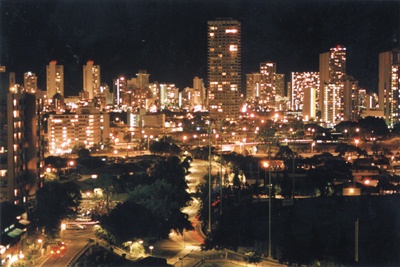All Nonfiction
- Bullying
- Books
- Academic
- Author Interviews
- Celebrity interviews
- College Articles
- College Essays
- Educator of the Year
- Heroes
- Interviews
- Memoir
- Personal Experience
- Sports
- Travel & Culture
All Opinions
- Bullying
- Current Events / Politics
- Discrimination
- Drugs / Alcohol / Smoking
- Entertainment / Celebrities
- Environment
- Love / Relationships
- Movies / Music / TV
- Pop Culture / Trends
- School / College
- Social Issues / Civics
- Spirituality / Religion
- Sports / Hobbies
All Hot Topics
- Bullying
- Community Service
- Environment
- Health
- Letters to the Editor
- Pride & Prejudice
- What Matters
- Back
Summer Guide
- Program Links
- Program Reviews
- Back
College Guide
- College Links
- College Reviews
- College Essays
- College Articles
- Back
A synopsis of a fictional week in Karachi, Pakistan
Day One:
Man, it’s hot in here. Today, I landed in Jinnah International Airport in Karachi, Pakistan, and the humidity here is killer. I’m here in the city to develop a thesis on the distribution of urban spaces and the populations inside of them. I’m renting a house in the nicest neighborhood of the city, named Clifton. The nicer neighborhoods are on the East side of the city, a wedge of land from the beach to Shah Faisal Town, the inland suburb of Karachi. The other, inner-city, neighborhoods are a lot less economically privileged and a lot more densely packed. There is even a mall on the beach-front, and I see many of the country’s richest living here. Tomorrow, I will document the patterns of the other neighborhoods of the city, and what I think about them.
Signed, Prof. Claymore J. Flapdoodle
Day Two:
The suburbs, as expected, were bristling with activity. From open-air markets to the “Wall Street” of I.I Chundrigar Road, the city was an impressive reflection of New York City. The first neighborhood I visited today was Saddar town in the inner-city. The driving in this city becomes crazy in the business center; so many people were walking, driving, and carting around in rickshaws. Saddar town is home to the Central Business District, so all of the skyscrapers and highrises towered over the crowded streets and sidewalks. To the north, the neighborhood of Lyari sits on the Lyari River. To give an idea on what goes on in this neighborhood, I’ll point to the government’s “Operation Lyari”, an effort to crack down on organized crime and gang violence in the area. The place isn’t the best in town, economically or socially, but the people from there can be nice. Lastly, I stopped at Jamshed Town, the most populous of all towns in Karachi. It is estimated that Jamshed passed 750,000 people over a decade ago. As far as Karachi goes, though, it’s a middle class, apartment-laden town. I like it a lot. The open air markets and soccer fields show a great deal of character for the place. In retrospect, the inner-city neighborhoods are different in many ways from the U.S.’s, but alike in many ways too. Tomorrow, I’ll probably look at the outer boroughs in order to identify sprawl in the city.
Signed, Prof. Claymore J. Flapdoodle
Day Three:
As it turns out, the outer city isn’t that different. Today, I travelled to the farthest edges of Karachi and saw more of what I saw yesterday. I should note that Karachi, compared to other world cities, isn’t as geographically large as some. Orangi Town, my first stop, is a large, low-income, squatter settlement to the northeast of downtown. This neighborhood was, crazily enough, home to 2.5 million people. It looked like a mess, but I heard that in the 1980s, a local man established programs for human needs, like education and financing, on his own. If that is the case, I bet he is renowned throughout the community and the city. To the northeast of that was New Karachi. It’s a big mix of factories, businesses, and medium-income housing. It is the lovechild of the city government, where they invest lots of development and industry. To the east of the downtown is Malir Cantonment. It is a fine-looking residential zone, as well as a military base. I’ve heard that the Pakistani Military is ferocious, but Karachi is far from any zone of military conflict. They are known to put on great displays on the Indian border during closing ceremonies, so I may drive to see that. If you drive out west from town, there is a settlement called Kiamari Town removed from the rest of the city. The oldest part of town, it is well known for its fishing and wide assortment of sports clubs. The trip between those towns took me most of the day, and I got home late. Once I did, I began to think about the spread of the towns. From Keamari Town, to Malir Cantonment, to my own Clifton, Karachi has expanded greatly in all directions. I bet Karachi will expand greatly in the future, but they’re going to need to focus on the city as it is, too.
Signed, Prof. Claymore J. Flapdoodle
Day Four:
I drove to the downtown area today, and really looked at the people and the places. The main highways allow for many cars, but don’t really help the public life of the city. The less-developed parts of town are better for public spaces, but that’s because they don’t have as much investment into infrastructure. I believe that Karachi has the potential to become the New York City of South Asia, but they would have to invest lots into the basic living of their people in order to ensure productivity. Developed countries have to remake what they’ve already built up in order to benefit the populace, but Karachi has the privilege of being able to go that direction right now. It would be great to see investments in public transportation, parks, and market squares, rather than more highways and skyscrapers. It may be more appealing to do the latter, but smart growth is better for the people and the country in the future.
Signed, Prof. Claymore J. Flapdoodle
Day Five:
Today, I took the day off from observing and travelled around the city looking for tourist spots. I first traveled to Karachi University, west of Malir. It has gained a reputation as the future of Pakistan’s finest leaders and scientists, rightly so. There are some views held in the college, however, that conflict with the majority of the rest of the country. After, I headed to the Karachi Sports Complex in Jamshed Town, near the downtown. There are multiple soccer fields and cricket pitches in the complex, being used by local kids and professional teams. I watched them for upwards of an hour, and then moved back to my house in Clifton. After, I walked to Clifton Beach, a popular spot for those living in Clifton. I rented a boat and drove it around the bay and the nearby Indus Delta. All in all, this look at the urban makeup of Karachi was interesting, and I will make more observations in the future.
Signed, Prof. Claymore J. Flapdoodle

Similar Articles
JOIN THE DISCUSSION
This article has 0 comments.

A requirement for my AP Human Geography project.